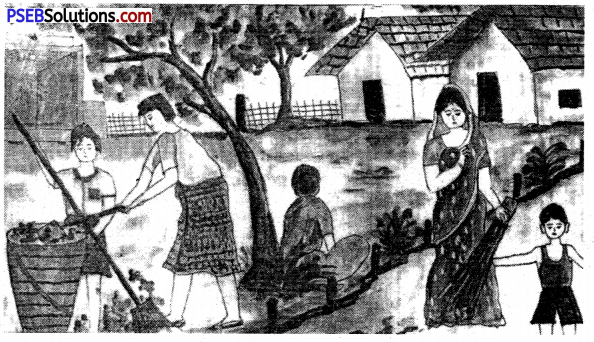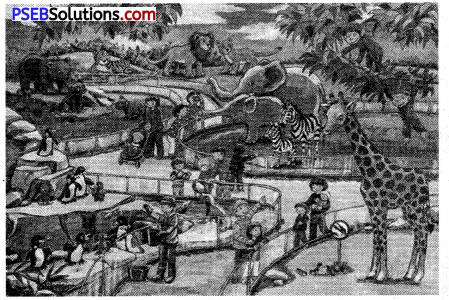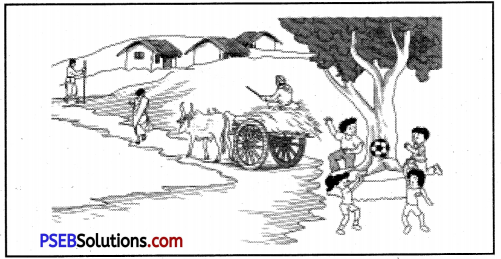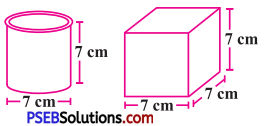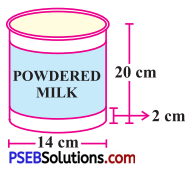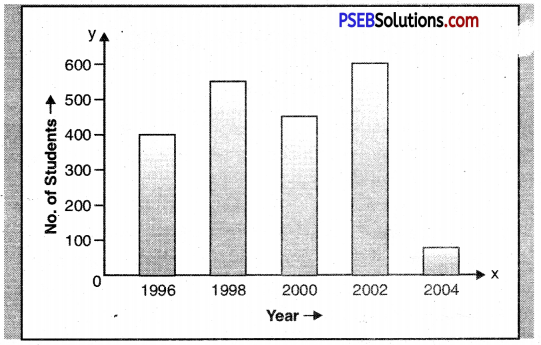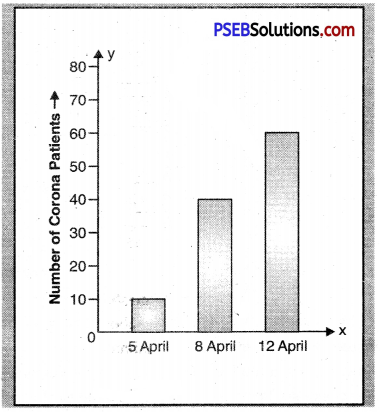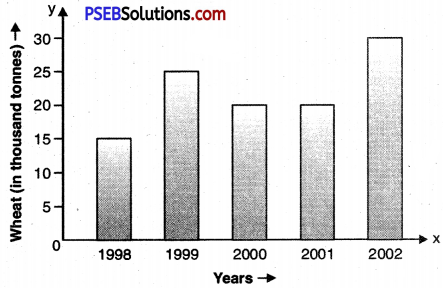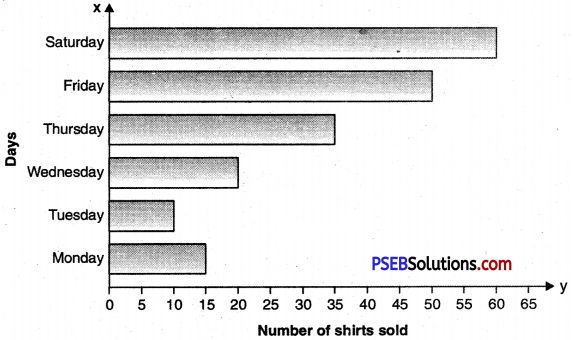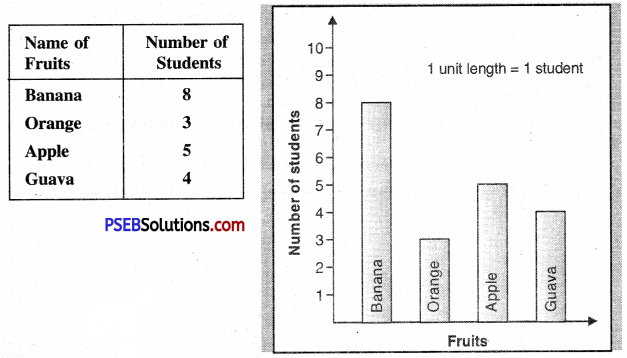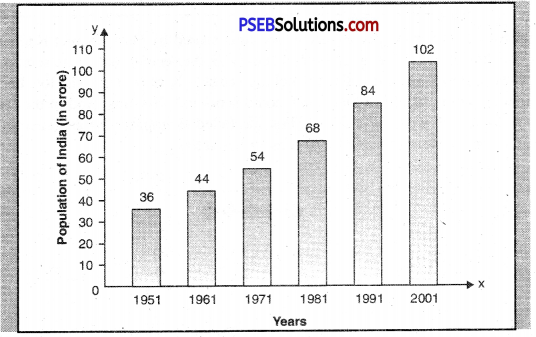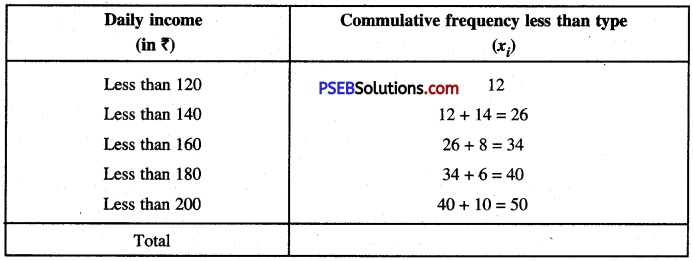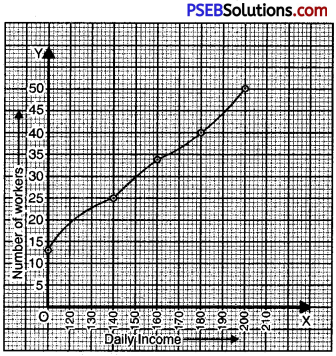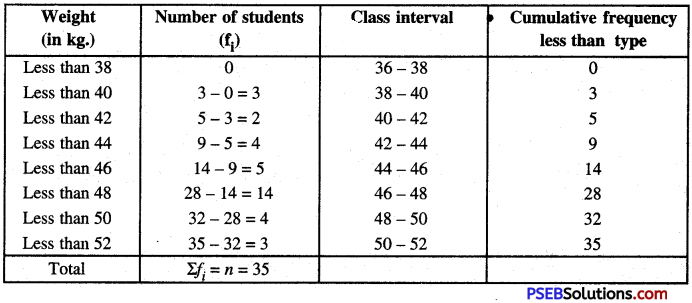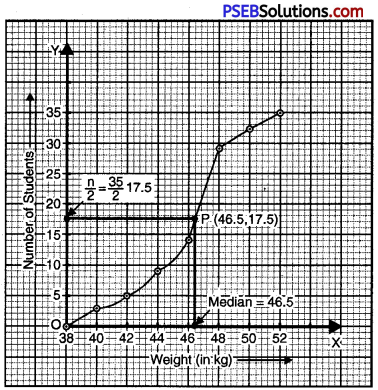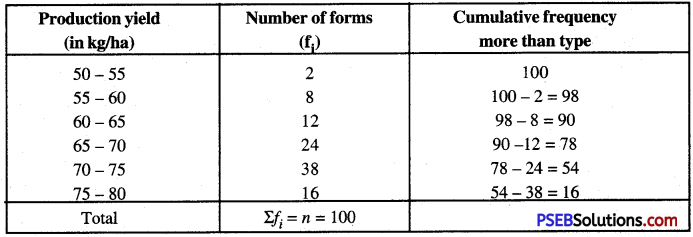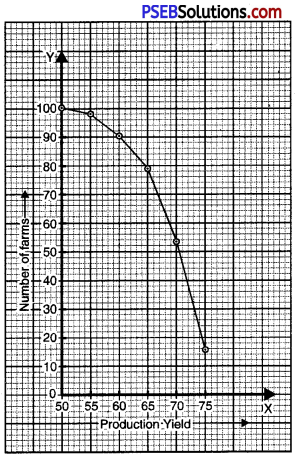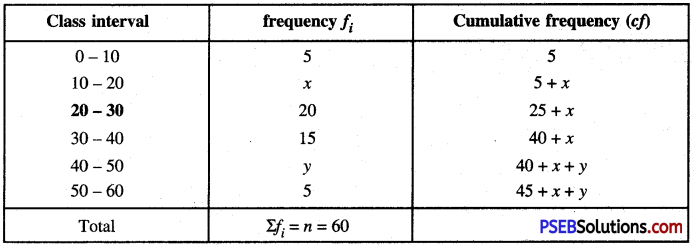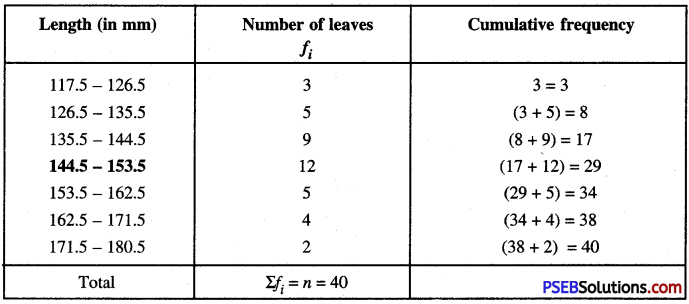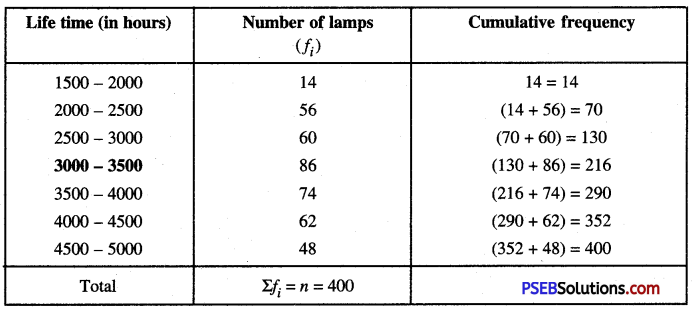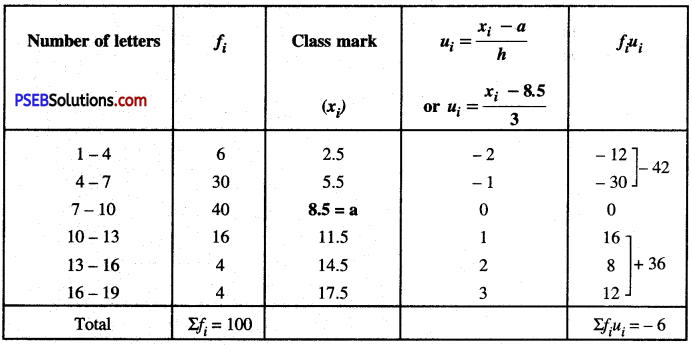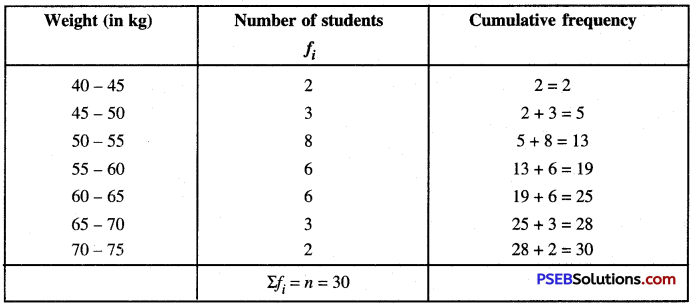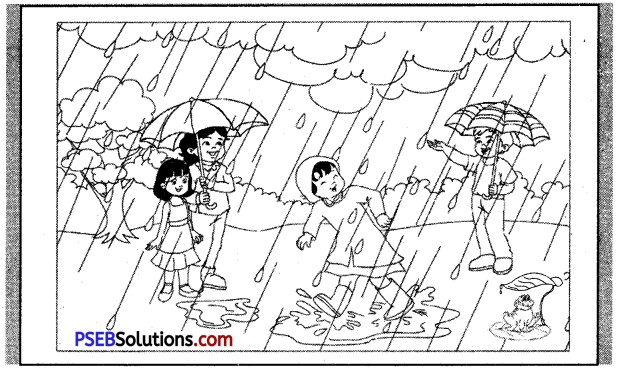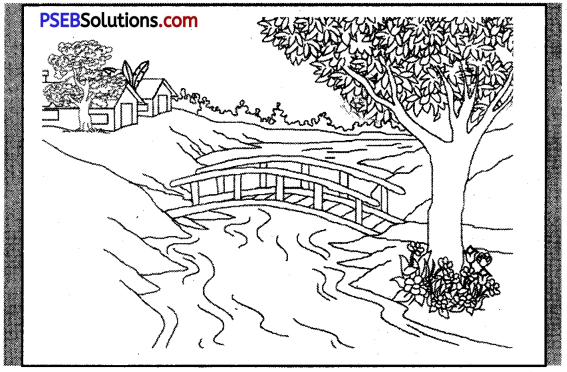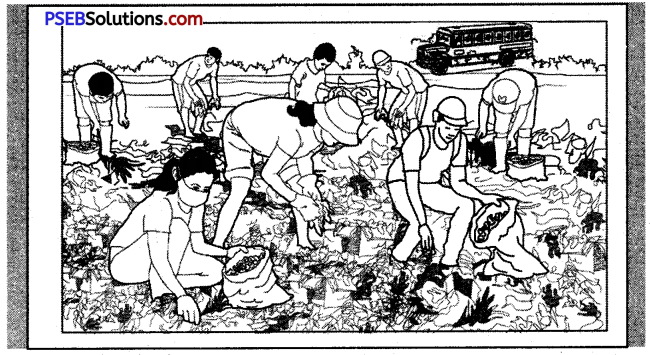Punjab State Board PSEB 6th Class English Book Solutions English Telephonic Message Writing Exercise Questions and Answers, Notes.
PSEB 6th Class English Telephonic Message Writing
1. Read the following telephone conversation between Lavkumar and Sanjay. Lavkumar is leaving home in a few minutes and won’t be able to meet Mahesh. He leaves a message for him.
Lavkumar : Hello ?
sanjay : Hello, could I speak to Mahesh ?
Lavkumar : I’m afraid he is out.
sanjay : Could you gave him a message ?
Lavkumar : Oh, sorry ! I’m leaving just now and won’t be able to meet him.
sanjay : Then, could you please leave a note for him, giving my message ?
Lavkumar : Of course that I’ll do.
sanjay : I’m going to the new film at Aarti Theatre. I’d like him to come with me if he’s free.
Lavkumar : But where shall I tell him to meet you ?
sanjay : Well, tell him that I shall be waiting for him at the gate at 1.45. If he is not there by 2, I’ll go in.
Lavkumar : Well, I’ll leave your message for him.
sanjay : Thanks, Bye !
![]()
Message
Dear Mahesh
There was a phone call from your friend, Sanjay. He says he is going to see the new film at Aarti Theatre this aftemoon.He wants you to go with him. He will be waiting for you at the gate from 1.45 to 2 pm. In case you don’t turn up he’ll go in
Lav Kumar
2. The following is a telephone conversation between John and David. After this call, Mr. John receives an urgent telephone call from Mumbai. Before leaving, he leaves a message for Mr. Soapy. Write the messages in not more than 25 words in the space provided.
David : Hello ! Is it Ahmedabad 632392 ?
John : Yes, it is.
David : Can I talk to Mr. Soapy.
John : Sorry, he is not in the office. May I know who is on the line?
David : I’am David, a friend of his.
John : Would you like me to convey a message ?
David : Yes, inform him that the interview scheduled for 5th October has been postponed to the 7th. So he can reach Delhi by, 6th evening.
John : I will surely convey this message to him.
David : Thank you !
Message
Dear Soapy
There was a call for you from Mumbai. Your friend David says the interview has been postponed to 7th October. You can now reach Delhi by 6th evening.
John
3. Read the following telephone conversation between Manu and Misha. Manu is about to leave home and won’t be able to meet his sister, Anju. He leaves a message for her. Write the message in the space below, using not more than 50 words.
Misha : Hello, is it 26370 ?
Manu : Yes
Misha : May I speak to Anju ? I’m her friend, Misha.
Manu : She is not here at present. She has gone to the market with her mother.
Misha : Then, will you please tell her to ring me up when she comes back ?
Manu : But I’m leaving just now for an imorfant piece of work and won’t be back before evening.
Misha : In that case, Will you leave a message for her ?
Manu : Why not ! Tell me.
Misha : I’m having a problem with some of the°sums in arithmetic and I want her help. I shall be coming to your house in the evening, 5 pm. Please leave my mesage for her to stay at home. –
Manu : Ok. I’ll be leaving your message for her. ‘
Misha : Thank you very much.
Message
Dear Anju
There was a telephone call for you from your friend, Misha. She is having a problem with some of the sums in arithmetic and wants your help. She’ll be coming to our house at 5 p.m. today.
Manu
4. Read the following telephone conversation between Baby Anita and Rohit Verma. Rohit Verma wants to talk to Vinod Sharma, Anita’s Father but the father is not at home. Anita is about to leave home and so she leaves a message for her father. Write the message in the space below, using not more than 50 words.
Rohit Verma : Hello, is that Baby Anita ?
Anita : Yes, Uncle, You are Uncle Verma, isn’t it.” ?
Rohit Verma : Oh, yes, But where is your dad ? Call him quick.
Anita : Uncle, he’s not at home. He’s gone to see one of his old friend.
Rohit Verma : Oh God ! Tell him to rang me up the moment he comes.
Anita : But, Uncle I am just leaving for my special class at school.
Rohit Verma : Ok, then leave a message for him.
Anita : Of course
Rohit Verma : I am speaking from Rajendra Hospital. Tell your dad that, the son of his boss has met with a serious accident. He has been admitted here in the Emergency Ward. The doctor is known to your father and the boss wants him to reach here immediately.
Anita : Ok Uncle,
Rohit Verma : Thank you.
Message
Respected Dad
There was a telephone call for you from Uncle Rohit Verma. He says that the son of your boss has met with a serious accident and has been admitted the Emergency Ward of Rajendra Hospital. Since the doctor is known to you, the boss wants you to reach the hospital immediately.
Anita
![]()
5. Read the following conversation between Mrs. Kapoor and Rohit. Rohit is about to leave for school within five mintues and his mother is not at home for the moment He leaves message for her. Write this message in the space below, using not more than 50 words.
Mrs Kapoor : Hello ! May I talk to Mrs. Mehta ?
Rohit : Sorry Aunty, Mom is not at home.
Mrs Kapoor : When is she expected back ?
Rohit : Probably it’ll take her a couple of hours. I am also leaving for school.
Mrs Kapoor : Well, then leave a message for her.
Rohit : O.K.
Mrs Kapoor : Mrs. Rana and Mrs. Chopra were to meet her today at your house at 3 pm. I was also to come with them to discuss some problems of the Ladies Club. Tell your mother not to wait for us. We shall now be meeting some other day.
Rohit : Ok Aunty, I’ll leave your message for mother in writing.
Mrs Kapoor : That’s like a good boy. I’m so proud of you.
Rohit : Thanks, Aunty.
Message
Dear Mom
Mrs Kapoor was on phone and she has left a message for you. She says that it won’t be possible to hold the Ladies Club meeting today. They want the meeting to be held some other day. So, please don’t wait for them.
Rohit
6. Read the following telephone conversation between Asha and Kiran. Kiran is about to leave home and will not be able to meet Aran. She leaves a message for him. Write this message in the space below, using not more than 40-50 words.
Asha : Hello, is that Kiran ?
Kiran : Speaking
Asha : It’s Asha here. You know there’s a good movie. Mr Left Foot. It’s running at Alpana: How about seeing it tomorrow?
Kiran : Yes, not a bad idea.
Asha : Let’s go to the evening show. Where should we meet?
Kiran : Let’s«meet at Wimpy’‘s comer, at 5.30. Is that Okay?
Asha : Fine, Look. Vijay’s coming along too. Why don’t you ask Arun to Join us?
Kiran : I’ll do that. He’s not at home at the moment, but I’ll tell him to ring you this evening Please don’t buy the tickets until he calls.
Message
Arun
Asha told me on phone that a good movie, ‘My Left Foot’ is running at Alpana. We have decided to see it tomorrow evening. Vijay is coming along too. Asha wants you to accompany us. We should be meeting at Wimpy’s Comer at 5.30 p.m. tomorrow. The programme will be final if you ring Asha and confirm you presence.
Kiran
7. Read the telephone conversation between Gopal and his neighbour’s brother, Mohan, from Delhi. Mohan is reaching Agra by Malwa Express. He wants his brother to take him from the Railway Station.
Mohan : Is that Gopal?
Gopal : Yes, what can I do for you?
Mohan : Brother, on your back side lives my brother Mr. A.K. Sharma. Will you please deliver a message to him ?
Gopal : Why not ? Mr. A.K. Sharma is like a brother to me. By the way, I also recognized you. You attended my brother’s marriage last year, when you passing your vacation with your brother.
Mohan : Yes Yes, you are right Now I am sure my message has reached. I am coming to Agra by the Malwa Express. Please ask my brother to come to the railway station with his car. I am coming with a lot of luggage.
Message
A.K. Sharma.
Here is a telephonic, message for you from you brother, Mohan from Delhi. He is coming with a lot of luggage in the evening by the Malwa Express. He wants you to reach the railway station with your car.
Gopal
![]()
8. Read the following telephonic conversation between John and Tom. Tom needs a book for the examination. He is busy in preparations. He does not want to waste his time in contacting Gopal who is next door neighbour to John. Gopal is expected back in the evening. Tom wants John to leave a message for Gopal.
Tom : Hello ! Is that John ?
John : You’re right.
Tom : Listen, John I’m going to give you a little trouble I need the book entitled How to Write Messages by ABC for my third paper. My own book is misplaced.
John : But I don’t have this book with me.
Tom : No No, John ! Not you. Gopal, your neighbour has this book. He will be back by the evening. Leave my message for him to come with the book.
Message
Gopal
Your fast friend, Tom rang me in the morning for to book ‘How to Write Messages’ by ABC. for his third paper. His own book has been misplaced. He may not come personally. He wants you to go to him with the book.
John
